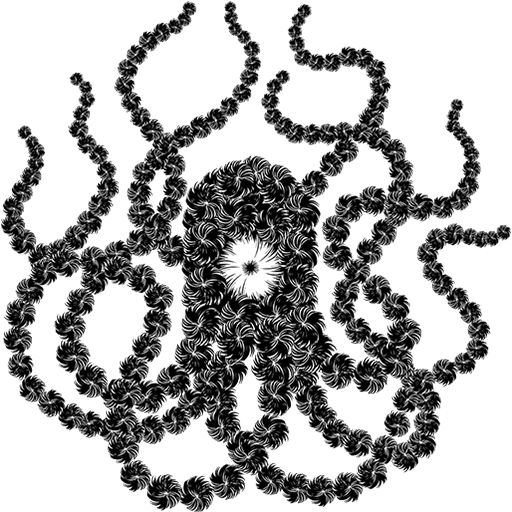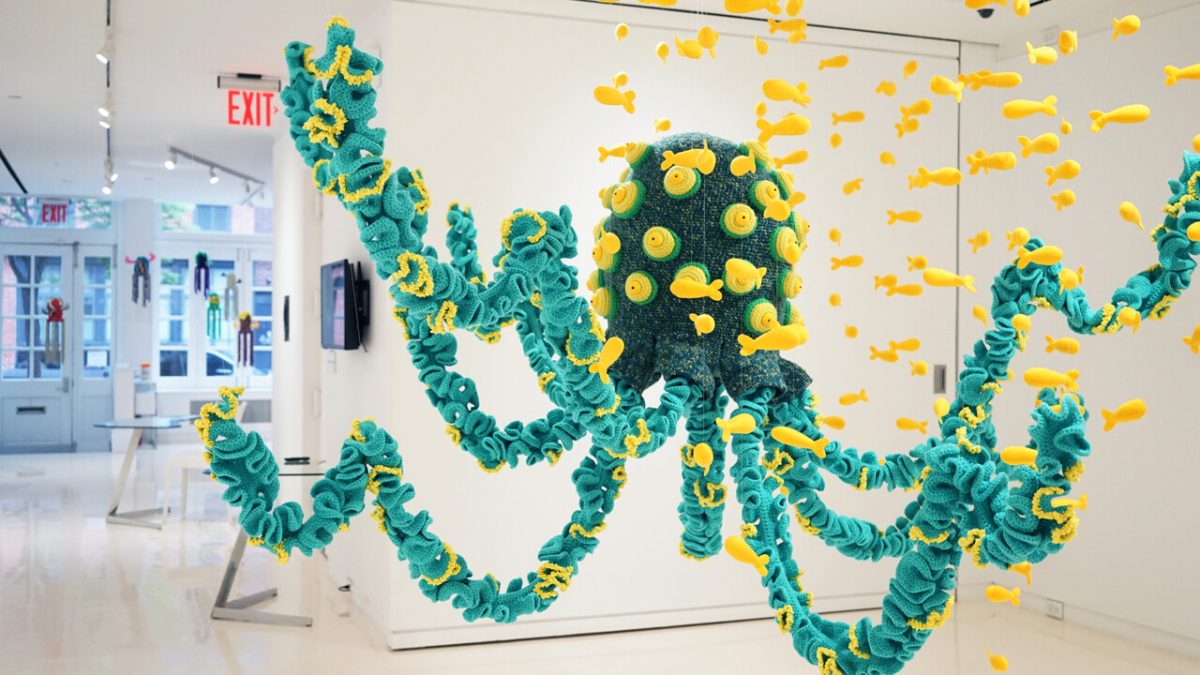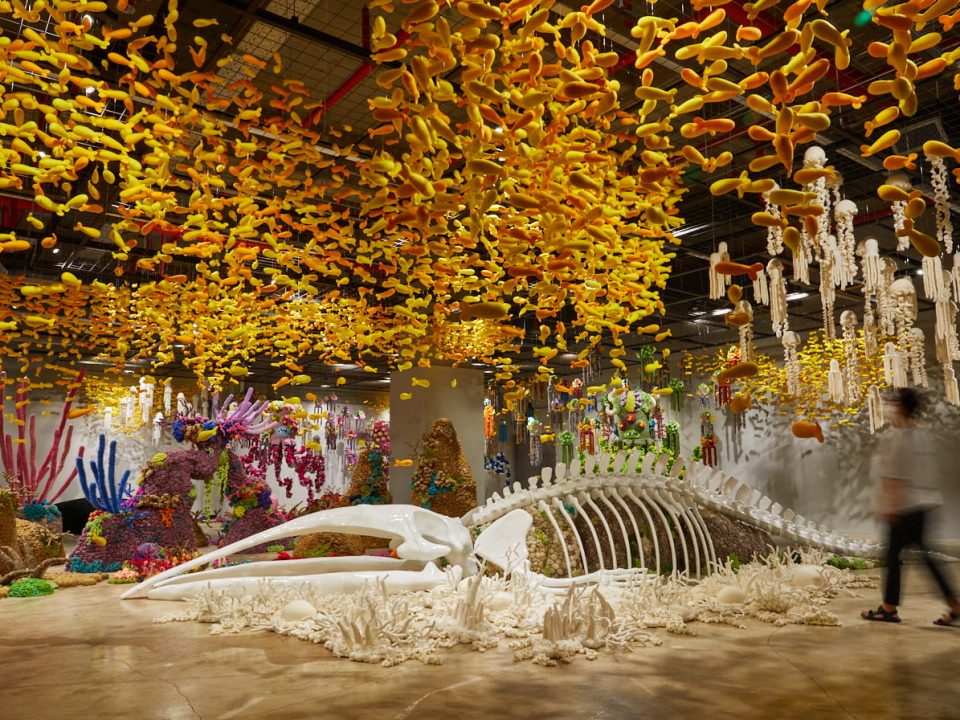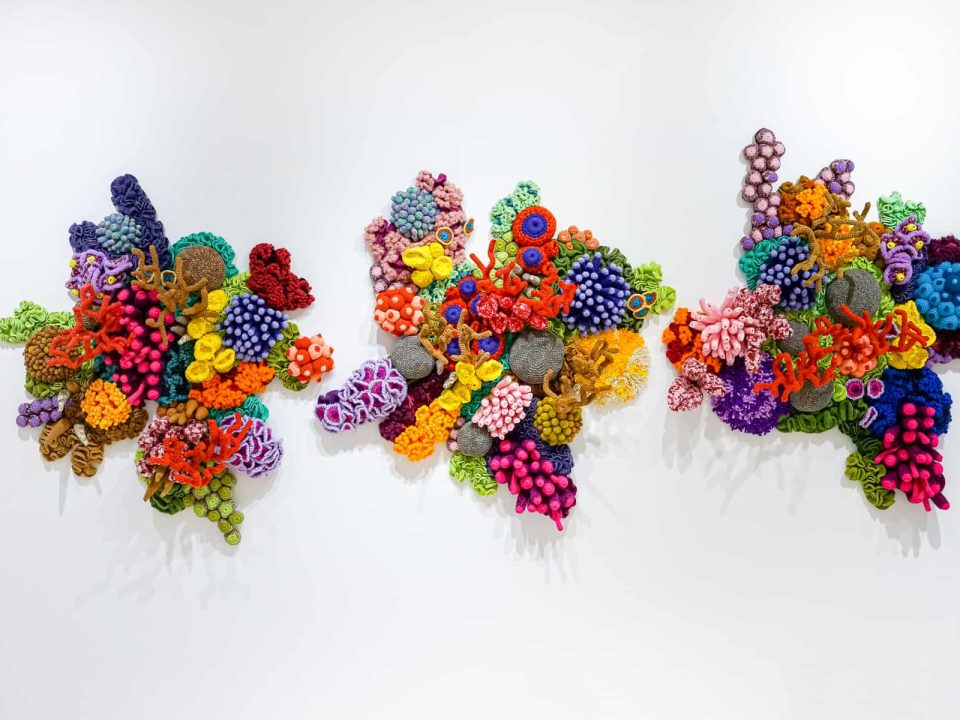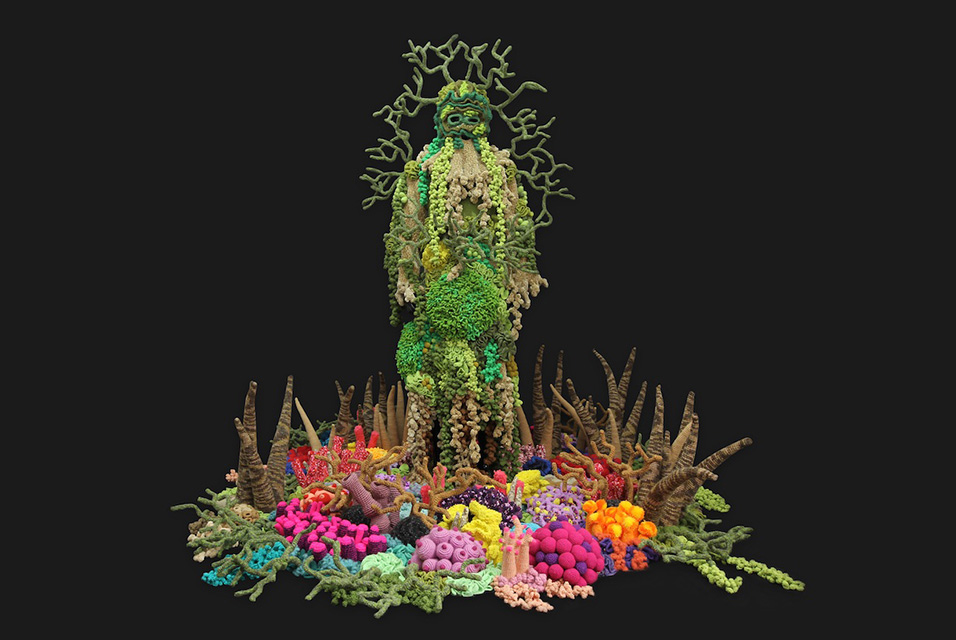
Jumping the Shadow: An Underwater Universe of Yarn
August 9, 2020
Mulyana: The art of playful crochet
November 24, 2020
Installation view: Mulyana & Iwan Effendi: Jumping the Shadow, Sapar Contemporary, New York, 2020. Courtresy the artist and Sapar Contemporary.
Posthumanism, in one form or another, asks us to expand the circle of moral concern to encompass critters beyond the human; animals have some rights. Saudi Arabia granted citizenship to a robot, and a few rivers have been recognized as persons around the world, including the Ganges in India and the Klamath river in California. Many humans, of course, still need not only rights but also recognition of those rights, and yet climate change and anxieties surrounding artificial intelligence have created some urgency around considering non-human life, too. The charming critters by Iwan Effendi and Mulyana presented in Jumping the Shadow, curated by John Silvis at Sapar Contemporary, invite reflections on our empathy towards lives (that only seem to be) beyond our own.
Both Indonesian, the artists call upon the country’s 900-year-old tradition of shadow puppet theater. In the gallery, the curator carefully positioned and lit the works to cast beautiful, kinetic shadows. Captivated by the objects themselves, it takes the stillness of admiration to notice the wider effect that they have. In this way, they draw attention to both their environment and to the relationships between material and immaterial elements.
Mulyana discovered he could crochet, knit, and weave together his values and concerns into playful objects. He has a very spiritual relationship to Islam, as Indonesian theology differs slightly from the Wahhabi orientation of Western Asia and North Africa. To be in community is to support community; caring for the poor and disenfranchised is a serious practice. Committed to that responsibility, he cultivates relationships with disparate groups. One of his first sets of collaborators were a group of transgender women whom he trained to become independent artisans. At any time, he has 25 people working with him to produce his vast underwater worlds.
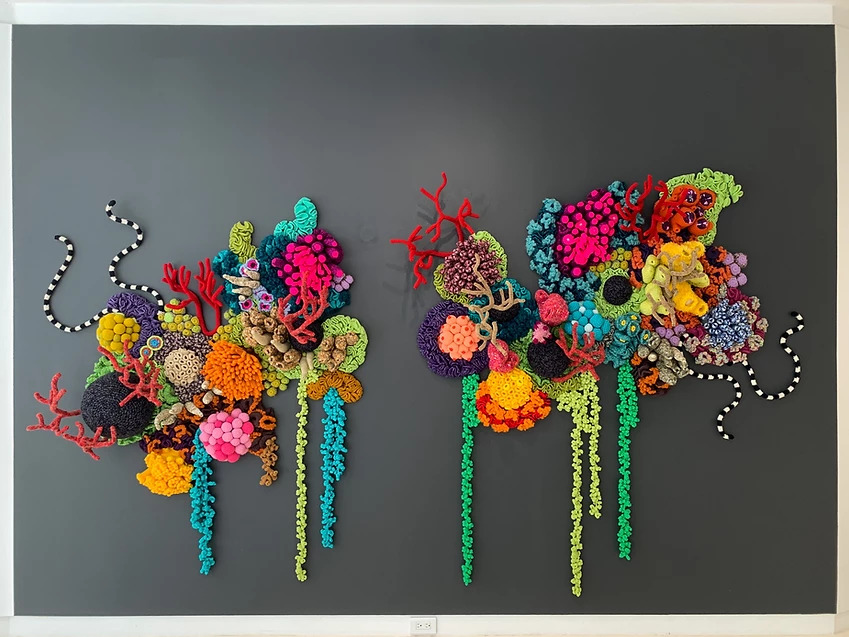
Installation view: Mulyana & Iwan Effendi: Jumping the Shadow, Sapar Contemporary, New York, 2020. Courtresy the artist and Sapar Contemporary.
Upon first entering the gallery, a large, multicolored coral reef, Harmony 14 (2019), reveals the carefully wrought stitching and extraordinary workmanship that is core to Mulyana’s studio. In the back area, a white coral island Bety 1 (2020) is intricate and delicate, a profound homage to the death of coral reefs bleached by warming waters; the series is named for his mother who died days after his birth. Coral reefs are produced by invertebrates that excrete an exoskeleton, which creates the ecosystem for incredible biodiversity, home to an estimated 25% of marine species.
“Mogus” (also the name of Mulyana’s alter ego) is a series of knit cephalopods whose name is an acronym that merges the Gurita animal (octopus) with his family name (Sigarantang). At the entry of the gallery are a dozen such pieces, each with a personality, colored and knit uniquely. Big Mogus (2020) is a green sea monster with yellow eyes that stretches more than six feet in the second room of the gallery. Environmentally conscious, Mulyana seeks repurposed yarn, contacts companies that overproduce fabrics, and even sometimes recycles materials from previous projects. The earth-made yarns become marine invertebrates that invoke the clean water on which they depend. The air in the exhibit becomes this water and as a viewer you are suddenly a participant in a shared atmosphere. The works tell this story without the impediments of language.

Installation view: Mulyana & Iwan Effendi: Jumping the Shadow, Sapar Contemporary, New York, 2020. Courtresy the artist and Sapar Contemporary.
Craft is an equal preoccupation for Iwan Effendi. On display are two sculptural figures, The Visitor #9 and #12 (both 2019), kin to the puppets he and his wife produce as a part of Pesta Boneka, the biannual puppet festival they run that brings puppetry companies from around the world to Indonesia. The sculptural puppets are made of rattan, wood, plywood, cloth, papier-mâché, and aluminum, with a delicacy that belies the strength to endure regular performance. His multigenerational knowledge of puppetry comes in part from a grandfather who was a master puppeteer and whose stories were political metaphors that led to his imprisonment.
Effendi’s charcoal and drawings are charming; one can’t help but want to enter their magical worlds. I stood before Perplexed 2 (2020) for quite a while, vaguely comforted by this dark and complex face that reflected my thoughts over the last few years. Close-up, colored pencil marks add the subtle touch that makes these faces so lively. The drawings range in size from small, delightfully evocative faces to the larger sophisticated drawing on the back wall, The Spectator (2020). Two works for the show, Lace 1: HER and Lace 2: HIS (2020) use Japanese rice paper to construct papier-mâché heads for the character to emerge into the room. A shadow figure dominates Puppet from Behind (2020) but then one spies a figure peeking out from the lower right corner, eyes staring out at the world, turning the imaginative creature into something more substantial, perhaps something to which we are responsible.
Responsibility weighs heavily these days: to each other, to the planet, to life itself. There’s a sense that these are serious times, their craziness confirming that something must be done. In the works by these two Indonesian artists, I am reminded that change is the work of a lifetime of continuous care and that it may be done thoughtfully, intentionally, and yet also lightheartedly. There’s a story of Krishna eating all the butter in the house when his mother isn’t looking and being scolded for stealing it, to which he replies: “What did I steal? Doesn’t all the food in the house belong to us?” Such playful approaches rewrite the terms by which we live and Jumping the Shadow invites us into that creative space.
source : https://brooklynrail.org/2020/07/artseen/Jumping-the-Shadow-Mulyana-Iwan-Effendi
